What are Police 10 Codes?
Police 10 Codes are signals police officers, law enforcement officials, and government agencies use to talk in two-way radio communications. The codes are numbers that correspond to words, phrases, and messages frequently used in law enforcement work. Also, private citizens use certain code variations in Citizen’s Band (CB) radio transmissions.
Police officers constantly communicate with dispatch, other officers, support departments, the local jail, county correctional facilities, etc. Primarily, the codes help streamline communication and add an element of secrecy. Plus, they help shield communications from the general public.
How did Police 10 Codes Originate?
Originally, police 10 codes were used in the United States law enforcement community before the Second World War. In 1940, the Association of Public Safety Communication Officials (APC) published the first official set of police 10 codes. These radio signals were invented to help reduce the use of speech on the police radio. In addition, the codes enable a certain amount of privacy to radio transmissions. Meaning that someone must know the meaning of the signals to understand the discussion.
In 1974, the Association of Public Safety Communication Officials expanded the use of police radio codes to make them briefer and to standardize message traffic.
Official Set of Police Ten Codes
There is no genuinely universal or official set of police 10 codes. Therefore, the meaning of a particular scanner code or signal can vary between one police jurisdiction and another. For example, police departments in California will likely use different codes and signals than the states of Florida, New York, or Texas.
At first, law enforcement’s ten signals were intended to be a concise, standardized system to help officers and officials talk on the radio. However, the proliferation of different meanings has rendered it somewhat useless. Most commonly, in situations where people from different agencies and jurisdictions need to communicate with one another.
In 2005, the United States Federal Emergency Management Agency (FEMA) began discouraging using ten-codes and other law enforcement radio signals. This was due to their high variability in meaning between departments and agencies. Hence, the Department of Homeland Security may discontinue using the signals.
Variations
Some organizations and municipalities also use other types of police radio codes. For example, the California Highway Patrol (CHP) uses “eleven-codes,” and the Port Authority Police use “eight codes.” They established these to have a new and unique set of signals.
Many police departments nationwide use regular English during radio conversations to clarify communication. This makes things easier for the officer and dispatch. As a result, they don’t have to mentally refer back to the list of ten codes to decipher a transmission. However, this approach does eliminate any secrecy or privacy from the radio transmission.
In addition, the meaning of the unique codes may vary between police officers and other public service units. For example, Emergency Medical Services (EMS), fire departments, and other law enforcement units.
List of Police 10 Codes
Following is a list of some of the most common police ten codes. Again, it is essential to note that there is no universal set of police ten codes. Usage varies between departments, states, and agencies. Please comment below if you are aware of any we may have missed.
10-1 = Poor reception
10-2 = Good reception
10-3 = Stop transmitting
10-4 = Message received, affirmative, OK
10-5 = Relay this information to (name of a person, officer, etc.)
10-6 = Officer is busy
10-7 = Out of service, unavailable
10-8 = In-service
10-9 = Please repeat (please repeat the message)
10-10 = Negative (no)
10- 11 = Dog case (or another animal)
10-12 = Standby
10-13 = Civilians present and listening (this allows dispatch or other offices not to disclose sensitive information on the radio)
10-14 = Prowler report
10-15 = En route to the station with the suspect
10-16 = Domestic problem
10-17 = Meet complainant
10-18 = Urgent matter
10-19 = Return to the station
10-20 = Specify location/my location is (name of location)
10-21 = Place a phone call to (name of person)
10-22 = Disregard
10-23 = Stand by on this frequency (Also, 1023 stands for “on the scene” in some areas)
10-24 = Assignment completed
10-25 = Please report in person (meeting)
10-26 = Detaining suspect
10-27 = Vehicle registration request
10-28 = Arrests/warrants found on driver’s license
10-29 = Arrests/warrants found on the vehicle
10-30 = Unnecessary use of police radio
10-31 = Crime or criminal act in progress
10-32 = Gun / firearm
10-33 = Emergency traffic follows; hold routine messages
10-34 = Radio Frequency open (cancels the 10-33 message)
10-35 = Major crime alert
10-36 = What is the correct time of day?
10-37 = Suspicious vehicle (investigate)
10-38 = Suspicious vehicle (stopping)
10-39 = False alarm; premises were occupied
10-40 = False alarm, no activity, premises appear to be secure
10-41 = Begin watch
10-42 = End of watch. Mainly, Police departments use the end-of-watch signal when an officer passes away. For instance, either in the line of duty or due to illness. The ceremony is typically conducted by the dispatcher issuing one last call to the officer, followed by a moment of silence.
10-43 = Information
10-44 = Permission to leave
10-45 = Fueling squad car/vehicle
10-46 = Provide motorist assistance
10-47 = Emergency road repair needed at
10-48 = Traffic standard repair needed at
10-49 = En route to an assignment
10-50 = Accident
10-51 = Tow truck needed
10-52 = Ambulance needed
10-53 = Road blocked at (name of location)
10-54 = Animals on the highway
10-55 = Security check (Also used for an intoxicated driver)
10-56 = Intoxicated pedestrian
10-57 = Hit-and-run accident
10-58 = Direct traffic
10-59 = Escort
10-60 = Squad in the vicinity, lock-out
10-61 = Personnel in area
10-62 = Reply to message
10-63 = Clear to copy info?
10-64 = Message for delivery
10-65 = Net message assignment
10-66 = Net message cancellation
10-67 = Person calling for help
10-68 = Dispatch message
10-69 = Confirms message received
10-70 = Prowler, fire alarm
10-71 = Gun involved, advise nature of fire
10-72 = Shooting, fire progress report
10-73 = Smoke reported
10-74 = Negative, no
10-75 = In contact with (name)
10-76 = Officer is en route / on the way
10-77 = Estimated Time of Arrival (ETA), amount of time until
10-78 = Need assistance
10-79 = bomb threat
10-80 = Bomb has exploded
10-81 = Breathalyzer report
10-82 = Reserve lodging
10-83 = Work school crossing at (location)
10-84 = If meeting _, please advise ETA
10-85 = Delay due to (reason)
10-86 = Police officer on-duty
10-87 = Pickup
10-88 = Please lookup the present phone number of (person)
10-89 = Bomb threat
10-90 = Bank alarm going off at (location)
10-91 = Picking up a prisoner
10-92 = Improperly parked vehicle
10-93 = Blockage
10-94 = Drag racing
10-95 = Prisoner/subject is in custody
10-96 = Psych patient, a person exhibiting crazy or psychotic behavior
10-97 = Check signal (1097 also means “On Scene” in California and other areas)
10-98 = Prison break or jailbreak
10-99 = Wanted/stolen record
Other Police 10 codes
10-100 = Dead body found
10-101 = What is your status?
10-106 = Secure
10-200 = Alarm
10-999 = Officer down / officer needs help immediately. This is an SOS alert that requires immediate attention. When an officer is down, all available units will respond.
Note: These are sometimes in the format “code number” instead of using the number 10 as a prefix. For example, in some situations, the officer wouldn’t say, “I’m 10-7”, meaning they are “out of service.” Instead, the officer would say, “Code seven.” Again, the style of usage may vary by department.
List of Police Scanner Codes
Following is a sample list of police scanner codes. Remember, these can vary by department, city, and geographic area.
187 = Homicide
207 = Kidnapping (207a is a kidnapping attempt)
211 = Robbery (also, the 211a scanner code means robbery with alarm, 211s is with silent alarm)
217 = Assault with intent to murder
5150 = Mental case
10851 = Auto theft / stolen vehicle
10852 = Tampering with vehicle
20001 = Hit and run – Felony
20002 = Hit and run – Misdemeanor
20007 = Hit and run – Unattended
21958 = Drunk pedestrian on the roadway
22350 = Speeding
22500 = Illegal parking
23101 = Drunk driving – with injuries
23102 = Drunk driving
23103 = Reckless driver
23104 = Reckless driver
23105 = Driver under the influence of narcotics
23109 = Auto Racing
23110 = Person throwing objects at vehicles
23151 = Drunk driving – with injuries
23152 = Drunk driver
In addition to numerical scanner codes, departments may assign a meaning to a color (e.g., blue, red, purple, etc.). For example, in some departments, Code Blue means “emergency,” similar to its use in hospitals. Also, Code purple means “gang activity.” Similarly, there is no universal standard for color codes.
Use of the Phonetic Alphabet in Radio Communication
The International Phonetic Alphabet (IPA) is an alphabetic phonetic notation system based primarily on the Latin alphabet. The International Phonetic Association developed the Phonetic Alphabet to standardize the representation of the sounds of spoken language.
Police officers, cops, military officials, private investigators, and civilians use the phonetic alphabet during radio communications. These individuals use the alphabet to communicate clearly with other cops, dispatch, or officials. For example, when communicating a subject description, a tag number, or a street address. It is often used in radio communication.
Military Phonetic Alphabet
Officers may use the military phonetic alphabet when talking on the radio. Using the military phonetic alphabet helps ensure all parties understand the correct spelling of names, streets, buildings, etc. Following is a table explaining the letters of the phonetic alphabet and their pronunciation:
A = Alpha (AL fah)
B = Bravo (BRAH VOH)
C = Charlie (CHAR lee)
D = Delta (DELL tah)
E = Echo (ECK oh)
F = Foxtrot (FOKS trot)
G = Golf (GOLF)
H = Hotel (hoh TELL)
I = India (IN dee ah)
J = Juliett (JEW lee ETT)
K = Kilo (KEY loh)
L = Lima (LEE mah)
M = Mike (MIKE)
N = November (no VEM ber)
O = Oscar (OSS cah)
P = Papa (pah PAH)
Q = Quebec (keh BECK)
R = Romeo (ROW me oh)
S = Sierra (see AIR rah)
T = Tango (TANG go)
U = Uniform (YOU nee form
V = Victor (VIK tah)
W = Whiskey (WISS key)
X = X-Ray (ECKS RAY)
Y = Yankee (YANG key)
Z = Zulu (ZOO loo)
Civilian Phonetic Alphabet
Following is a version of the phonetic alphabet for civilian use:
- A = Adam
- B = Boy
- C = Charles
- D = David
- E = Edward
- F = Frank
- G = George
- H = Henry
- I = Ida
- J = John
- K = King
- L = Lincoln
- M = Mary
- N = Nora
- O = Ocean
- P = Paul
- Q = Queen
- R = Robert
- S = Sam
- T = Tom
- U = Unicorn
- V = Victor
- W = William
- X = X-Ray
- Y = Yellow
- Z = Zebra
List of Acronyms Used by Cops During Police Work
Additionally, officers may use acronyms to shorten communications. Following are some of the most common acronyms and terms (we’re still building this part of our list, so if you know of any others, please leave a comment below):
- ADW = Assault with a Deadly Weapon
- AKA = Also Known As
- AG = Attorney General
- ATF = Alcohol Tobacco & Firearms
- B & E – Breaking and Entering
- BOLO = Be On the Lookout
- CHP = California Highway Patrol
- CRT = Code Response Team
- CI = Confidential Informant
- CO = Commanding Officer
- DA = District Attorney
- DEA = Drug Enforcement Agency
- DL = Driver’s License
- DOA = Dead On Arrival
- DOC = Department of Corrections
- DMV = Department of Motor Vehicles
- DEA = Drug Enforcement Administration
- DOB = Date Of Birth
- DUI = Driving Under the Influence
- DWI = Driving While Intoxicated
- ETA = Estimated Time of Arrival (also used in general to mean “how much time”)
- EOW = End of Watch
- FBI = Federal Bureau of Investigation
- FTA = Failure To Appear
- GTA – Grand Theft Auto
- OIS = Officer-Involved Shooting
- PD = Police Department
- PnP = Party in Play. Most often refers to a party in progress that involves drug use such as meth or ecstasy.
- POI – Person of Interest
- RHD = Robbery Homicide Division
- RP = Reporting Party
- SRT = Special Response Team
- SWAT = Special Weapons And Tactics
- VIN = Vehicle Identification Number
Other Types of Codes and Signals
Occasionally, departments may use coded names and terms to specify a unit that covers a particular geographic area, such as Patrol 1, Patrol 2, etc. For example, the code “Patrol 1” may refer to a particular beat or section of a city, town, etc.
Otherwise, supervisors, motorcycle units, swat teams, or marine units may have a special designation.
Also, departments may use coded names to represent different segments, such as Squad 1, Unit 1, Team 3, etc. These may indicate the particular group responding to a call or the squad on the crime scene.
Amateur Radio Operators
Amateur radio Ham operators do not use ten codes. Instead, they use something called Q codes, which are derived from Morse code. Using ten codes is highly discouraged in amateur Ham radio, especially among seasoned professionals. However, they are sometimes used by novice operators.
Questions, Comments, and Suggestions
If you have any questions about police ten codes or are looking for the meaning of something in particular, please leave a comment below. Also, if you’d like to take this information with you in a PDF eBook, please visit the books section.
More Information
If you’re interested in police work, learn about the equipment and vehicles used by cops in the line of duty. Also, view a list of resources related to law enforcement agencies, associations, and more.

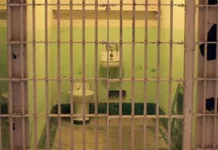

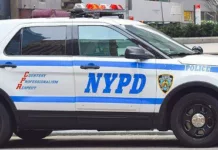
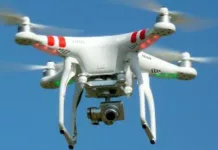

You can use two-way radios to listen in on police conversations. In the United States, it is technically permissible to do so, despite the fact that regulations differ from nation to nation. To listen to police walkie talkies, use a standalone scanner.
I heard a woman officer say fish out of water 3 Times Across the scanner and I was wondering what this meant.
What does it mean when they say in a report they were assigned to the community response team, utilizing the identifier Romeo 26-xray??? please and thank you
what does hold the air mean when said by law enforcement dispatcher in San Antonio TX
It may be a request for temporary radio silence.
its a message to let others know not to transmit because they have a situation where they will need to not be transmitted over. Like a potential use of force
The following might be considered for the acronym section: RP
Some agencies/jurisdictions will use this to refer to the ‘Reporting Party’.
Got a question I ve herd officers in st paul pd and metro pd and minniapolis pd all have relay channels and there’s a 4 code system for severity code 1 capital call code 2 sws ,or in persurt with just lights ,code 3 low sirens (they control the sound of sirens code 4: al clear
The use of ten codes is discouraged read again .also in GB we have RC1 RC2 RC3 race codes black white brown oriental etc etc
do you mean x5 which means times five. which means no front or back plates no license and no insurance and no registration
another common acronym now, is POI…person of interest. Either as a witness or suspect.
Under Q-codes, you said their use is discouraged? I’ve been a ham radio operator for almost 40 years now, callsign is N4LP, and that is the first time I’ve ever heard such a comment. We use Q-codes all the time, especially in Morse code transmissions, but they also drifted into voice communications long before I even became a ham. I don’t know where you got that information, but I do believe it is in error.
Their use in law enforcement is discouraged, not in other types of communications.
Emory,
I have been a Ham for 32 years & for the majority of that time I’ve been very involved In ARES, RACES, SKYWARN, & MARS, I’ve been an EC, DEC, & SEC in 1 or more of these organizations. From the time that I first joined ARES & RACES in the late 80s to present day. We have been trained & encouraged to use Q codes [& Z Codes in MARS] to both expedite & simplify communications. I totally agree with you, “I don’t know where they got their information that ‘The use of the signals is highly discouraged in amateur radio use, especially among seasoned professionals. However, they are sometimes used by novice operators. They are most definitely, in error.”.
73,
Jim/KBØCIR
The use of ten codes is discouraged in Ham radio use, not Q codes.
I’ve heard it too, frm a Sheriff.But he was talking about law enforcement.
In Colorado an acronym police use is ATL for Attempt To Locate
I know there are some agencies that use DLN instead of DL. All it means is Drivers License Number. Same thing but different terminology.
Officer pulled up behind me with no lights in use. Maybe a well being check? I heard dispatcher say my name with code 10-86. State of Indiana.
‘Where you actually an officer on duty though?.’ Just wondering since your context wasn’t exactly clear the way you described you situation.
What about 10-100 & 10-200 ?
The in field 10-100 is better than taking a 10-200
What code is used when an officer asks for all law enforcement help, local, state and Federal law?
Most States it’s 11-11 (Officer down / officer needs help)
Also, they only use a handful of them normally.
What does code 46 mean
It depends on the context in which it is being used, and on the department that is using it. The most common ten code associated with code 46 is 10-46, which means to “provide motorist with assistance.”
What is 10-89 when it definitely is NOT a bomb threat? Local police use this very frequently.
The most common use of the ten code 10-89 is bomb threat. However, some departments may assign a different meaning to it. For example, Norfolk, VA assigns the meaning “Request Additional Chief” to the 10-89 code.
In my town, it’s used to ask if the officer is secure while on a call.
What does 30 David mean,
Most likely the dispatch Callsign
When a police officer runs your name and it comes back clear but has 10-43 information what does that mean?
INTOXICATED PEDESTRIAN
It means they have information
What is 10-56? That is missing in the set up. Is there no 10-56?
10-56 is use for Intoxicated Pedestrian
Generally cops have “cheat sheets” so they don’t have to remember every last one of them
What are the police asking for when they read a plate(10-28) and say with z5?
They are looking for vehicle registration information for a particular vehicle. Not sure about the z5. It may be a special code used by a particular department that provides additional information on the purpose of the request.
What does it mean when they say “go south” and not meaning like directional
Although the meaning may vary between jurisdictions and departments, the phrase “go south” is a slang term that generally means to go downward or lower in value, or into a worse condition or position. Cops may use the term to describe a situation that is about to get out of control by saying, “things are about to go south”.
It means that the situation might get bad or is going bad. Thats what it meant for us anyway. I was a federal officer for Dept. Homeland Security.
Try remembering all the codes for Freeway Service Patrol in Cali. We have codes that start with 11 too.
I heard some police radio traffic where the codes 715 and 630 were used. I can’t find what these mean, does anyone know?
I watched the film Triple 9 and was wondering why that code isn’t on this list. Is 999 truly the universal code for Officer down? Can you let me know?
999 is there on the list it’s the last before police scanner
Where i live its 10-13 called 3 times for officer down or in distress
I heard be sure to clear this call and 10-19 on the 313. I get all of that except the 313
Depending on the context or location, 313 may have different meanings:
313 may refer to the area code for Detroit.
313 may refer to dispatch, as in “313, please repeat last message.”
313 may be a slang term used by a particular police department.
In most cases, it is likely referring to dispatch.
If you are stopped by an officer and they radio bag you have a pending 10 what does that mean
You wouldn’t happen to know the 10 codes for Ft Myers, FL? I read the list you have published here on the site, but I see codes that are listed but mean different things here.
I would say they are “codes” not meant to be mean known by all.. Like football or military, you don’t want the other team to know exactly what you are saying.
The other day i heard an officer run a background check on someone and I over heard dispatch say 32 red white but otherwise clear and the person was free to go. However, I have never heard this code before and cannot find it anywhere. It was a california University officer. Any idea on this code i cant locate anything like that.
That particular code does not sound familiar and we weren’t able to find anything on it. It may be part of a coding system that is proprietary to California universities, or more than likely, to that particular university.
10-32 means misdemeanor warrant for arrest of that person. 10-34 Generally means felony warrants. At least here in so cal that’s what it means.